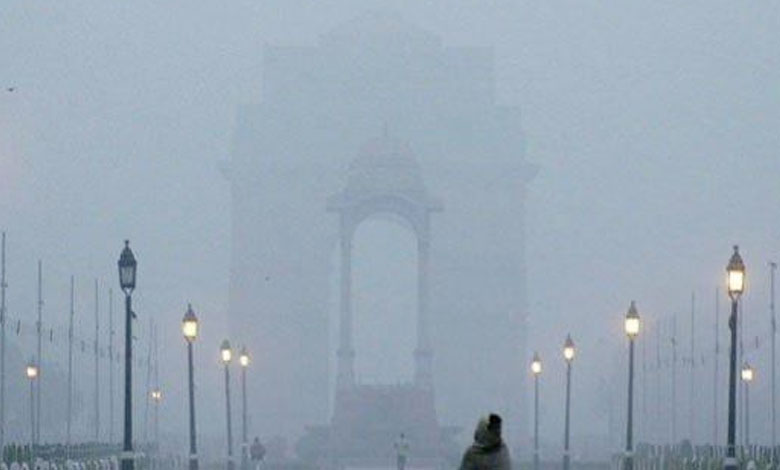Delhi Weather Update: Air Quality in Plummets Amid Cold Wave
"Stay updated on Delhi's air quality and weather forecast. Learn about the AQI levels, GRAP measures, and health advisories as the city faces a cold wave and pollution crisis."

Delhi, the bustling capital of India, continues to grapple with deteriorating air quality, which has hit the “very poor” category amid a persistent cold wave.
As of January 20, the Air Quality Index (AQI) reached concerning levels, posing significant health risks to its residents.
This article delves into the current air quality status, weather forecasts, and measures taken to combat the crisis while providing valuable insights for Delhiites.
Table of Contents
Delhi’s Current Air Quality Status
According to the Central Pollution Control Board (CPCB), Delhi’s overall AQI was recorded at 349 at 6 a.m. on January 20.
While this places it in the “very poor” category, several locations in the city reported even higher AQI levels, breaching the 400 marks, indicating a severe health risk. Below is a snapshot of AQI readings across prominent areas:
- Anand Vihar: 407 (Severe)
- Vivek Vihar: 390 (Very Poor)
- Wazirpur: 381 (Very Poor)
- Ashok Vihar: 366 (Very Poor)
- Chandni Chowk: 347 (Very Poor)
- Dwarka-Sector 8: 379 (Very Poor)
- Jahangirpuri: 373 (Very Poor)
- ITO: 370 (Very Poor)
- Lodhi Road: 360 (Very Poor)
- Najafgarh: 310 (Very Poor)
- R K Puram: 380 (Very Poor)
- Rohini: 370 (Very Poor)
- Shadipur: 331 (Very Poor)
The CPCB’s daily bulletin reported a significant rise in the 24-hour average AQI, jumping to 368 on Sunday from 255 recorded on Saturday.
Weather Forecast: Fog, Thunderstorms, and Rain
The India Meteorological Department (IMD) predicts moderate fog over parts of Delhi throughout the week. While maximum temperatures are expected to range between 23°C and 26°C, minimum temperatures may dip to 8°C or 9°C.
Mark your calendars for January 22 and 23, as thunderstorms and rain are likely to bring temporary relief from pollution. However, the foggy conditions are expected to persist, potentially exacerbating pollution levels.
Revised Graded Response Action Plan (GRAP): Updates and Measures
The Commission for Air Quality Management (CAQM) has been actively monitoring the situation. On January 16, GRAP Stage 3 measures were revoked after AQI levels dipped below 300 for two consecutive days. However, intensified actions under Stages I and II continue to prevent further deterioration.
Also Read | Dense Fog Disrupts Delhi-NCR: 41 Trains Delayed as Travel Challenges Mount
Stage 3 Measures
When in effect, GRAP Stage 3 involves the following:
- Ban on private construction and demolition activities
- Restriction on BS-3 petrol and BS-4 diesel private four-wheelers
The Supreme Court recently revised the AQI threshold for invoking Stage 3 measures from 400 to 350. Despite predictions, CAQM has refrained from reactivating Stage 3, citing meteorological conditions and wind speeds that may prevent further decline.
Air Quality Early Warning System: Predictions for the Coming Week
The Air Quality Early Warning System for Delhi forecasts “very poor” to “poor” air quality from January 20 to January 26. Factors contributing to these levels include:
- Low temperatures trapping pollutants near the ground
- Calm winds limiting the dispersion of pollutants
- Increased emissions from vehicles and industries
Health Advisory for Residents
With AQI levels remaining hazardous, residents are advised to take the following precautions:
- Limit Outdoor Activities: Avoid strenuous outdoor activities, especially during early mornings and evenings when pollution levels are at their peak.
- Use Masks: Opt for N95 or higher-grade masks to reduce exposure to particulate matter.
- Air Purifiers: Consider using air purifiers indoors, particularly for vulnerable groups such as children and the elderly.
- Stay Informed: Regularly monitor AQI updates and follow local advisories.
